Archive
Roland, Browse & Delbanco
- Roland, Browse & Delbanco
- GalleryArt Dealer
Émigré art historians and art dealers, Henry Roland and Gustav Delbanco, along with Lillian Browse, opened their Mayfair gallery, Roland, Browse & Delbanco, in 1945.
Word Count: 24
19 Cork Street, Mayfair, London W1.
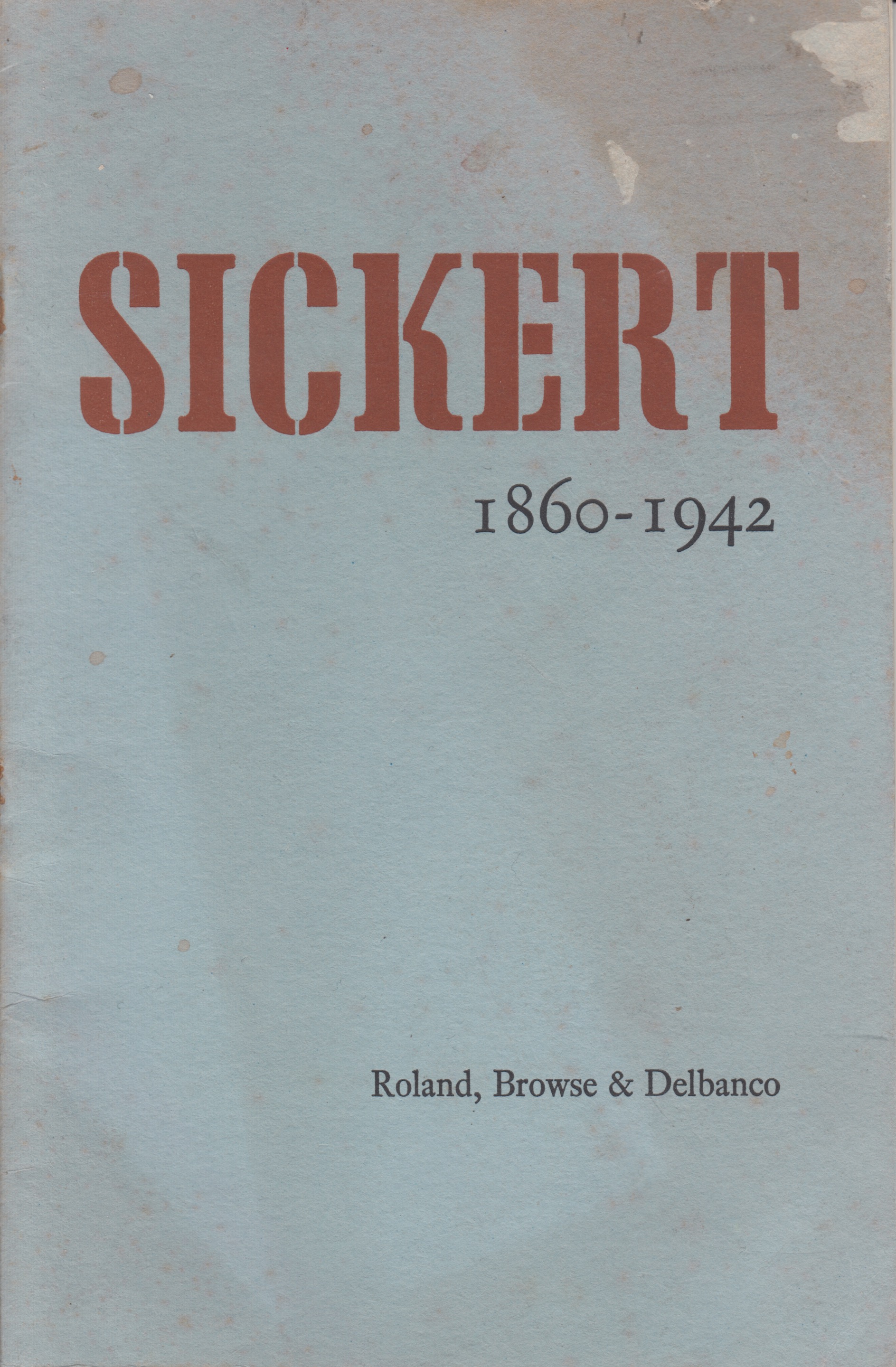
Sickert 1860–1942, exh. cat. Roland, Browse & Delbanco, London, 1960, cover (METROMOD Archive). 
Sickert 1860–1942, exh. cat. Roland, Browse & Delbanco, London, 1960, title page and p. 1 (METROMOD Archive). 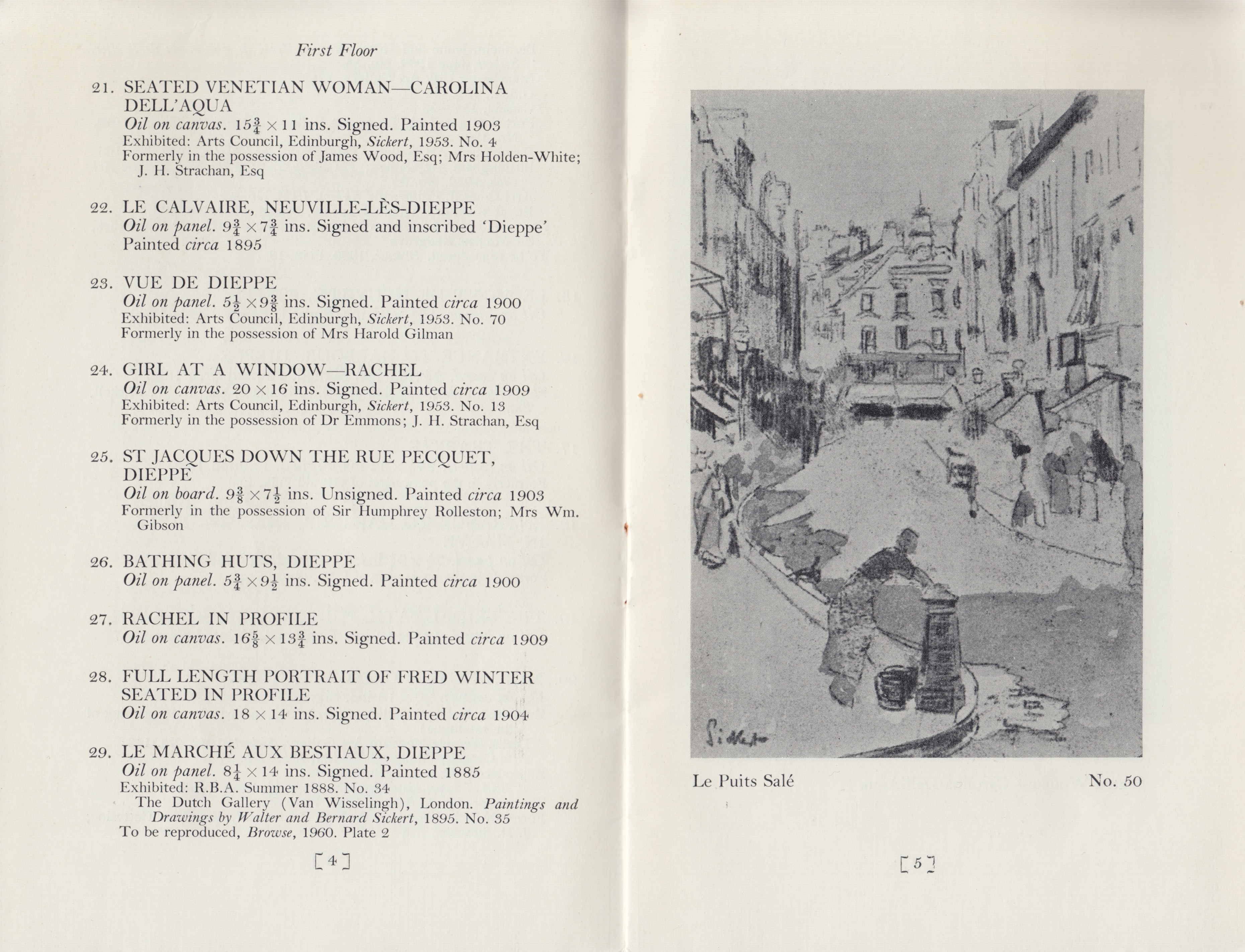
Sickert 1860–1942, exh. cat. Roland, Browse & Delbanco, London, 1960, pp. 4–5 (METROMOD Archive). 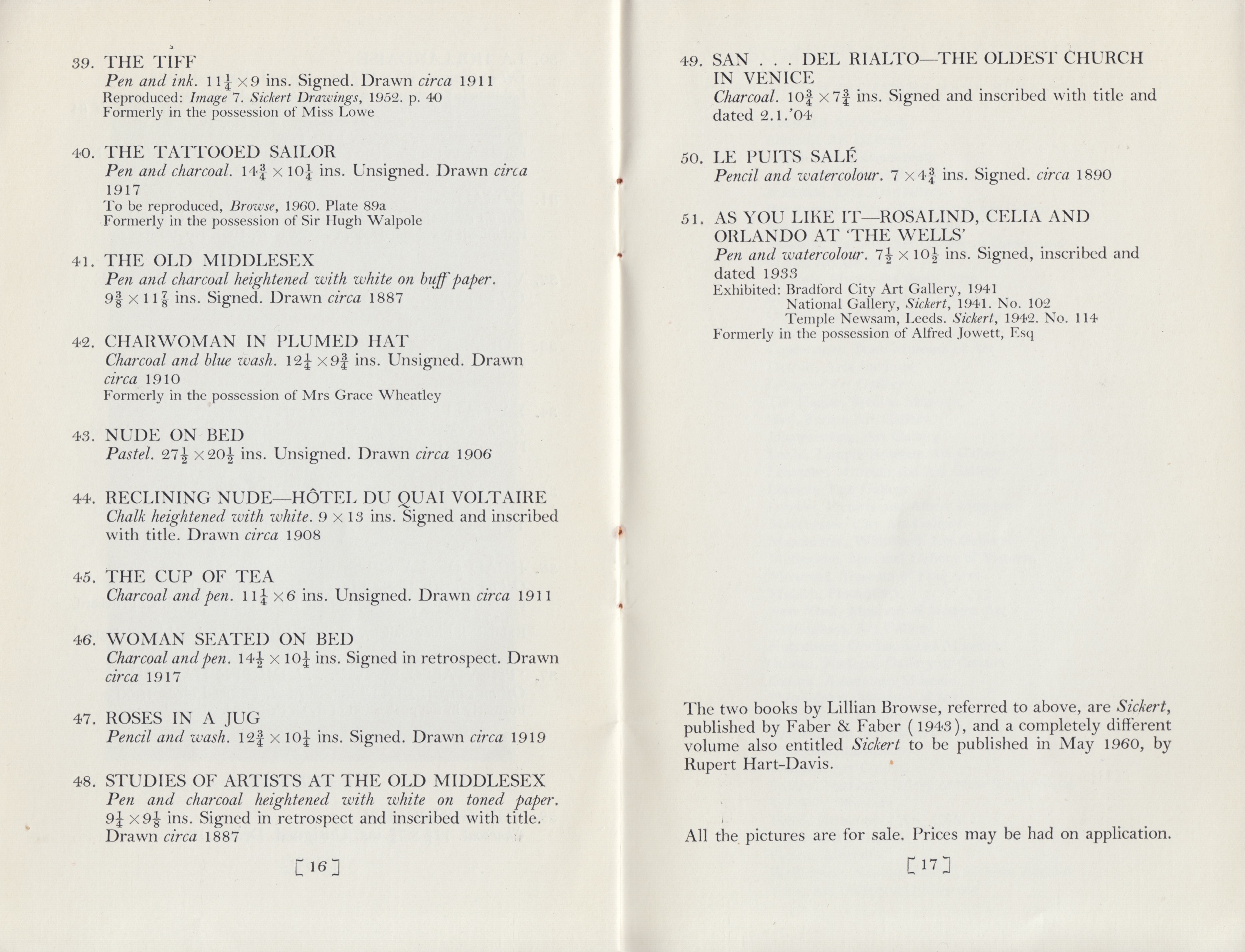
Sickert 1860–1942, exh. cat. Roland, Browse & Delbanco, London, 1960, pp. 16–17, mentioning two books by Lillian Browse on Sickert (METROMOD Archive). 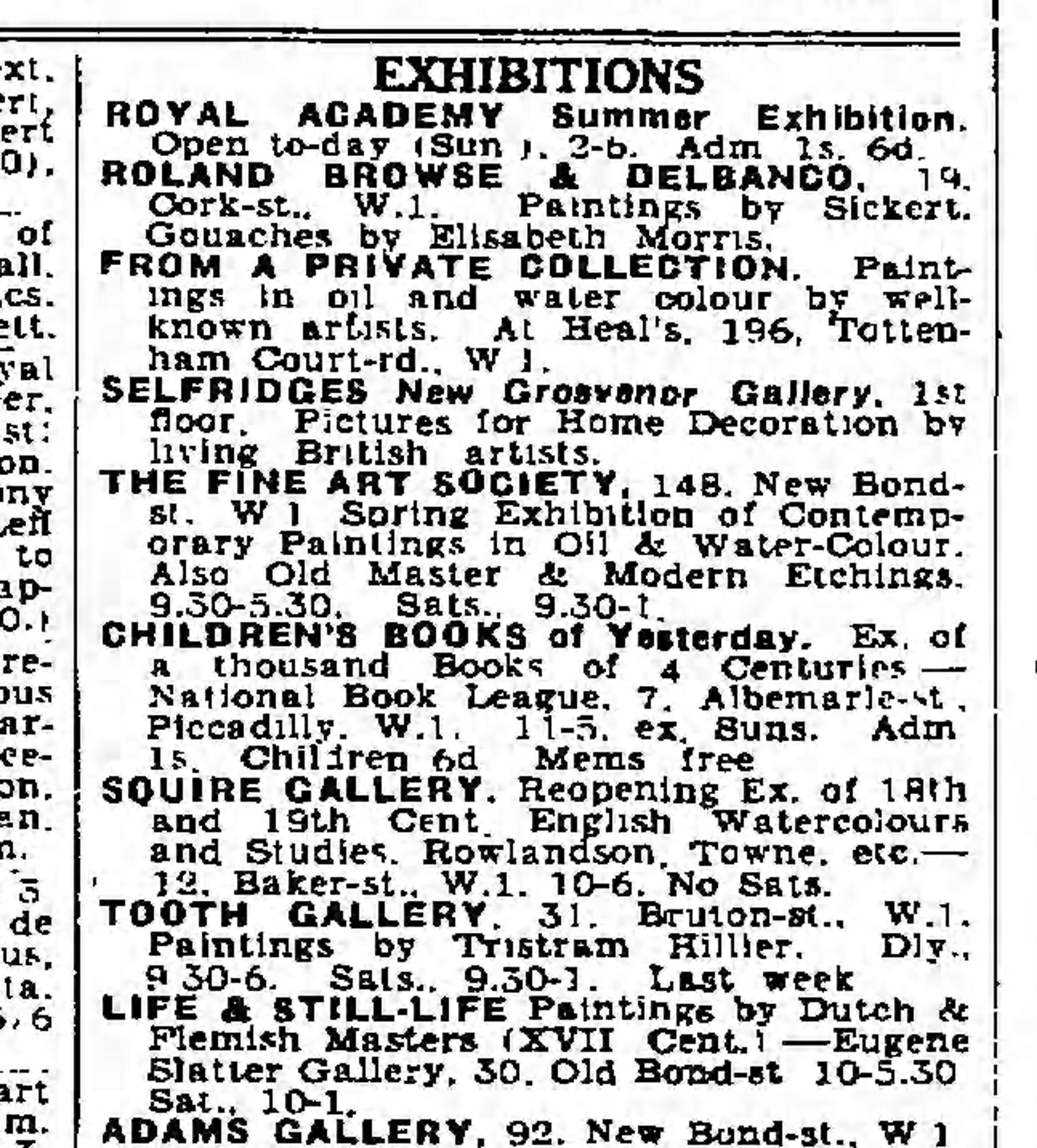
Advertisement for the Sickert exhibition at Roland, Browse & Delbanco in 1946 in The Observer, 26 May 1946, p. 7 (Photo: Private Archive). 
Advertisement for the Rodin: Sculptures and Drawings exhibition at Roland, Browse & Delbanco in 1953 in The Manchester Guardian, 22 April 1953, p. 5 (Photo: Private Archive). 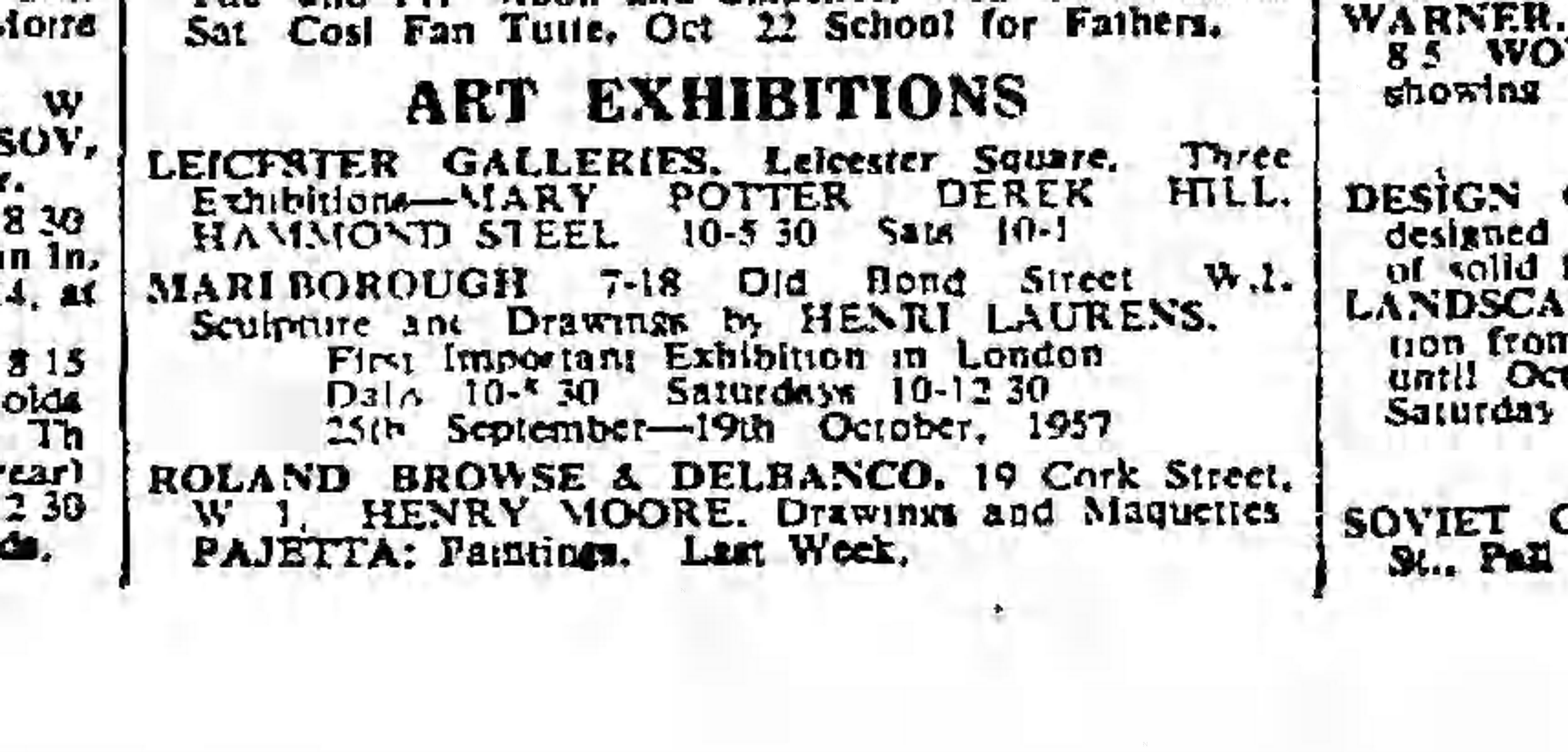
Announcement for the Henry Moore. Drawings and Maquettes and Pajetta: Paintings exhibitions at Roland, Browse & Delbanco in 1957 in The Manchester Guardian, 14 October 1957, p. 5 (Photo: Private Archive). 
Announcement for the Philip Sutton. Recent Paintings and Margaret Kaye. Fabric Collages and Drawings exhibition, at Roland, Browse & Delbanco in 1960 in The Guardian, 27 June 1960, p. 7 (Photo: Private Archive). Browse, Lillian, editor. Augustus John: Drawings. Faber & Faber, 1941.
Browse, Lillian, editor. Sickert. Faber & Faber, 1943.
Browse, Lillian, editor. Constantin Guys. Faber & Faber, 1946.
Browse, Lillian, editor. Barbara Hepworth. Sculptress. Faber & Faber, 1946.
Browse, Lillian, editor. Degas dancers. Faber & Faber, 1949.
Browse, Lillian, editor. William Nicholson, with catalogue raisonné of the oil paintings. Rupert Hart-Davis, 1956.
Browse, Lillian, editor. Sickert. Rupert Hart-Davis, 1960.
Browse, Lillian. Duchess of Cork Street. The Autobiography of an art dealer. Giles de la Mare, 1999.
Darby, William. “Obituary: Lilian Browse.” The Independent, 17 December 2005, www.independent.co.uk/news/obituaries/lillian-browse-519836.html. Accessed 14 April 2021.
Delbanco, Gustav. Letter to Agnes Holthusen. Agnes Holthusen Papers (Germanisches Nationalmuseum, Deutsches Kunstarchiv, Nuremberg, 24 February 1954).
Delbanco, Gustav. “Obituary: Henry Roland” (9 January 1993). The Independent, 18 September 2011, www.independent.co.uk/news/people/obituary-henry-roland-1477516.html. Accessed 14 April 2021.
Farr, Dennis. “Obituary: Henry Roland” (9 January 1993). The Independent, 22 October 2011, www.independent.co.uk/news/people/obituary-henry-roland-1477517.html. Accessed 14 April 2021.
Farr, Dennis. “Empathy for Art and Artists; Lilian Browse, 1906–2005.” Newsletter of the Courtauld Institute of Art, no. 21, Spring 2006, https://web.archive.org/web/20131007045136/http://www.courtauld.ac.uk/newsletter/spring_2006/p04browse.shtml. Accessed 16 April 2021.
Roland, Henry. Behind the Facade: Recollections of an Art Dealer. Weidenfeld & Nicolson, 1991.
Stewart, Steven. “Obituary: Gustav Delbanco” (13 February 1997). The Independent, 23 October 2011, www.independent.co.uk/news/people/obituary-gustav-delbanco-1278361.html. Accessed 25 January 2021. Accessed 16 April 2021.
Summers, Cherith. “Roland, Browse and Delbanco.” Brave New Visions. The Émigrés who transformed the British Art World, exh. cat. Sotheby’s, St. George’s Gallery, London, 2019, p. 26. issuu, https://issuu.com/bravenewvisions/docs/brave_new_visions. Accessed 16 April 2021.
Word Count: 256
- 1945
- 1977
Lillian Browse, Gustav Delbanco, Henry Roland.
- London
- Burcu Dogramaci. "Roland, Browse & Delbanco." METROMOD Archive, 2021, https://archive.metromod.net/viewer.p/69/1470/object/5145-11259510, last modified: 20-06-2021.
-
Rosa SchapireArt HistorianLondon
The art historian Rosa Schapire, a supporter of Expressionist art, contributed to the presence of Expressionist art in England with loans and donations from her art collections rescued to London.
Word Count: 30
Jussuf AbboSculptorGraphic ArtistLondonThe Berlin sculptor Jussuf Abbo emigrated together with his family to London in 1935, where he received a limited number of commissions and participated in a few group exhibitions.
Word Count: 28
Focus on Architecture and SculptureBookLondonFocus on Architecture and Sculpture by émigré photographer Helmut Gernsheim brought together his work and experience as a photographer for the National Buildings Record (NBR).
Word Count: 25
Marlborough Fine ArtArt GalleryLondonMarlborough Fine Art was founded in 1946 by the Viennese emigrants Harry Fischer and Frank Lloyd in the Mayfair district, focused on Impressionists, Modern and Contemporary Art.
Word Count: 26
The Warburg InstituteResearch InstituteLondonThe Kulturwissenschaftliche Bibliothek Warburg in Hamburg achieved a new presence in London after 1933 under the name The Warburg Institute as a research institution with a library and photo archive.
Word Count: 29
Faber & FaberPublishing HouseLondonFaber & Faber shows the importance of publishing houses as supporters of contemporary art movements and of the contribution of emigrants, helping to popularise their art and artistic theories.
Word Count: 29
Ala StoryGalleristCuratorArt CollectorMuseums DirectorLondonOriginally from Vienna, Ala Story worked for galleries such as Redfern and Storran, opened the Stafford Gallery in 1938 and developed it into the British Art Centre.
Word Count: 26
20th Century German ArtExhibitionLondonThe 20th Century German Art exhibition of 1938 gave visibility to artists who had been defamed at the Munich exhibition Entartete Kunst and were persecuted by the National Socialist regime.
Word Count: 29